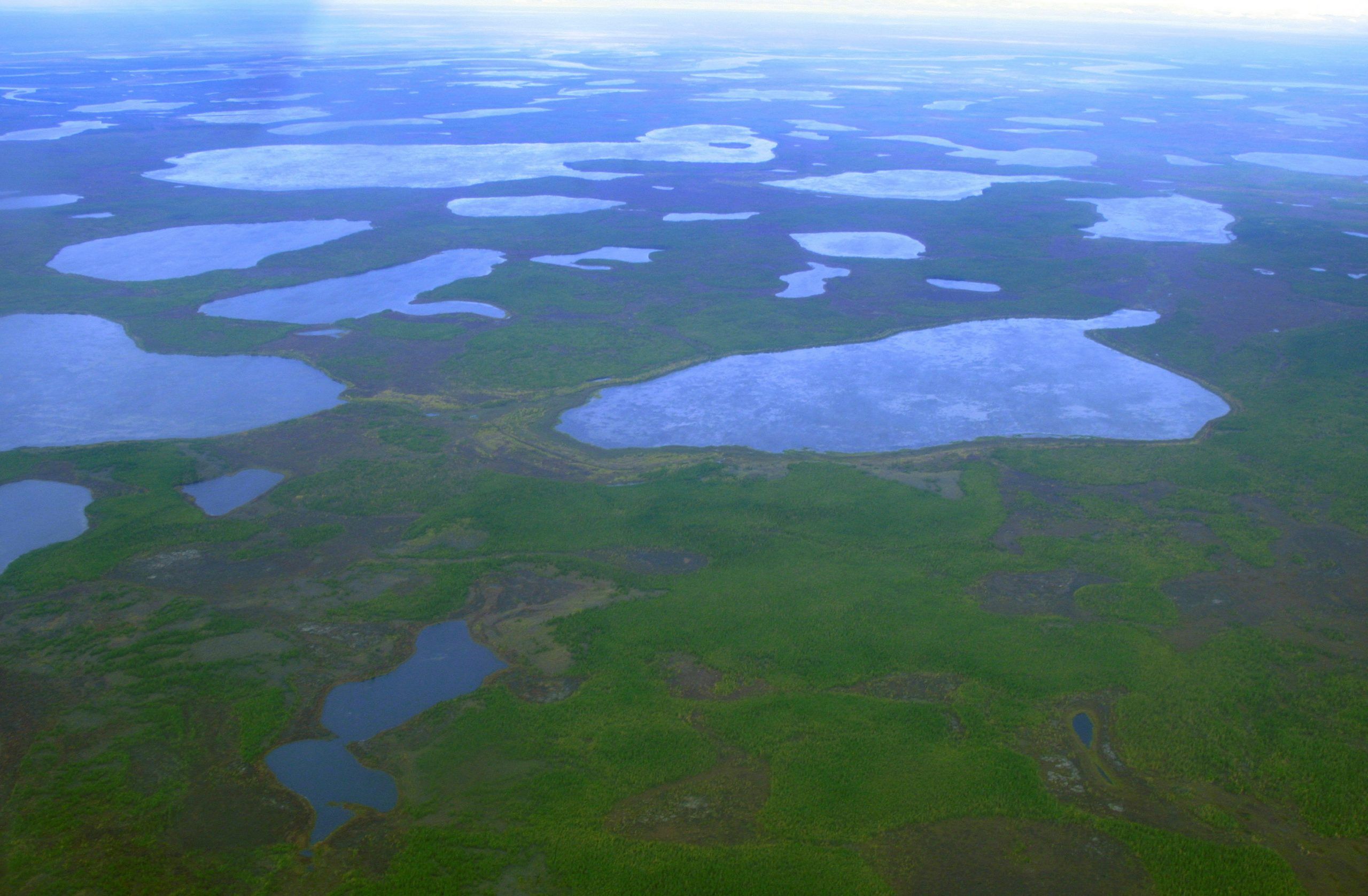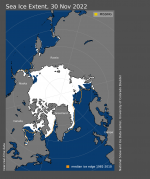I was counting on the sea level raising 87 meters so I could have waterfront property.Well fuck. I was counting on 9 degrees Fahrenheit of warming.
It's Climate Change I tell'ya!! IT'S CLIMATE CHANGE!!
- Thread starter B00Mer
- Start date
You are using an out of date browser. It may not display this or other websites correctly.
You should upgrade or use an alternative browser.
You should upgrade or use an alternative browser.
Part of the problem for sure , roads turning to ice is also helps . Trucks and buses off the road also took a toll . Just another fun snow storm we have them most years .Its not the tires.
There is only climate change in the Northern hemisphere...... oh wait.....Coldest spring in Australia since1974 eh?
Scientists revive 48,500-year-old ‘zombie virus’ buried in ice
They remained infectious despite spending many millennia trapped in the frozen ground
Author of the article:Bloomberg News
Bloomberg News
Low De Wei
Publishing date:Nov 29, 2022 • 1 day ago • 1 minute read
The thawing of ancient permafrost due to climate change may pose a new threat to humans, according to researchers who revived nearly two dozen viruses – including one frozen under a lake more than 48,500 years ago.
European researchers examined ancient samples collected from permafrost in the Siberia region of Russia. They revived and characterized 13 new pathogens, what they termed “zombie viruses,” and found that they remained infectious despite spending many millennia trapped in the frozen ground.
Scientists have long warned that the thawing of permafrost due to atmospheric warming will worsen climate change by freeing previously trapped greenhouse gases like methane. But its effect on dormant pathogens is less well understood.
The team of researchers from Russia, Germany and France said the biological risk of reanimating the viruses they studied was “totally negligible” due to the strains they targeted, mainly those capable of infecting amoeba microbes. The potential revival of a virus that could infect animals or humans is much more problematic, they said, warning that their work can be extrapolated to show the danger is real.
“It is thus likely that ancient permafrost will release these unknown viruses upon thawing,” they wrote in an article posted to the preprint repository bioRxiv that hasn’t yet been peer-reviewed.
“How long these viruses could remain infectious once exposed to outdoor conditions, and how likely they will be to encounter and infect a suitable host in the interval, is yet impossible to estimate.”
“But the risk is bound to increase in the context of global warming when permafrost thawing will keep accelerating, and more people will be populating the Arctic in the wake of industrial ventures,” they said.

 torontosun.com
torontosun.com
They remained infectious despite spending many millennia trapped in the frozen ground
Author of the article:Bloomberg News
Bloomberg News
Low De Wei
Publishing date:Nov 29, 2022 • 1 day ago • 1 minute read
The thawing of ancient permafrost due to climate change may pose a new threat to humans, according to researchers who revived nearly two dozen viruses – including one frozen under a lake more than 48,500 years ago.
European researchers examined ancient samples collected from permafrost in the Siberia region of Russia. They revived and characterized 13 new pathogens, what they termed “zombie viruses,” and found that they remained infectious despite spending many millennia trapped in the frozen ground.
Scientists have long warned that the thawing of permafrost due to atmospheric warming will worsen climate change by freeing previously trapped greenhouse gases like methane. But its effect on dormant pathogens is less well understood.
The team of researchers from Russia, Germany and France said the biological risk of reanimating the viruses they studied was “totally negligible” due to the strains they targeted, mainly those capable of infecting amoeba microbes. The potential revival of a virus that could infect animals or humans is much more problematic, they said, warning that their work can be extrapolated to show the danger is real.
“It is thus likely that ancient permafrost will release these unknown viruses upon thawing,” they wrote in an article posted to the preprint repository bioRxiv that hasn’t yet been peer-reviewed.
“How long these viruses could remain infectious once exposed to outdoor conditions, and how likely they will be to encounter and infect a suitable host in the interval, is yet impossible to estimate.”
“But the risk is bound to increase in the context of global warming when permafrost thawing will keep accelerating, and more people will be populating the Arctic in the wake of industrial ventures,” they said.

Scientists revive 48,500-year-old ‘zombie virus’ buried in ice
Researchers revived nearly two dozen viruses - including one frozen under a lake more than 48,500 years ago.
Inexperience.We lost a new pickup yesterday morning coming back from Sayward. And it was the tires.mostly.
I find the inexperienced tires work best .Inexperience.
I was always under the impression that my all seasons were fine for the winter, just had to be more careful etc. Then the wife bought me a set of winter tires for Xmas a few years ago. They make a huge difference.
Yeah. New snow tires do work best if you dont think youre invincible and give yourself enough time to brake or arent driving in Daytona.I find the inexperienced tires work best .
When seeing cars in the ditch it is always a good idea to slow down .Yeah. New snow tires do work best if you dont think youre invincible and give yourself enough time to brake or arent driving in Daytona.
What kills me is these people who get a 4 wheel or all wheel drive vehicle for the first time and think that because they can now start more quickly and easily that they can somehow also come to a stop faster. So they roar up behind someone on icy roads, try to stop and crunch. Ya always had 4 wheel breaks ya idjit!!!! This is no better in that regard!When seeing cars in the ditch it is always a good idea to slow down .
Scientists revive 48,500-year-old ‘zombie virus’ buried in ice
They remained infectious despite spending many millennia trapped in the frozen ground
Author of the article:Bloomberg News
Bloomberg News
Low De Wei
Publishing date:Nov 29, 2022 • 1 day ago • 1 minute read
The thawing of ancient permafrost due to climate change may pose a new threat to humans, according to researchers who revived nearly two dozen viruses – including one frozen under a lake more than 48,500 years ago.
European researchers examined ancient samples collected from permafrost in the Siberia region of Russia. They revived and characterized 13 new pathogens, what they termed “zombie viruses,” and found that they remained infectious despite spending many millennia trapped in the frozen ground.
Scientists have long warned that the thawing of permafrost due to atmospheric warming will worsen climate change by freeing previously trapped greenhouse gases like methane. But its effect on dormant pathogens is less well understood.
The team of researchers from Russia, Germany and France said the biological risk of reanimating the viruses they studied was “totally negligible” due to the strains they targeted, mainly those capable of infecting amoeba microbes. The potential revival of a virus that could infect animals or humans is much more problematic, they said, warning that their work can be extrapolated to show the danger is real.
“It is thus likely that ancient permafrost will release these unknown viruses upon thawing,” they wrote in an article posted to the preprint repository bioRxiv that hasn’t yet been peer-reviewed.
“How long these viruses could remain infectious once exposed to outdoor conditions, and how likely they will be to encounter and infect a suitable host in the interval, is yet impossible to estimate.”
“But the risk is bound to increase in the context of global warming when permafrost thawing will keep accelerating, and more people will be populating the Arctic in the wake of industrial ventures,” they said.

Scientists revive 48,500-year-old ‘zombie virus’ buried in ice
Researchers revived nearly two dozen viruses - including one frozen under a lake more than 48,500 years ago.torontosun.com

Especially when you have to slam into reverse because the ice is to keenBraking is waaay better in a 4x4. Its all about speed.

November 29, 2022
Strongest Arctic cyclone on record led to surprising loss of sea ice
Hannah HickeyUW News
A warming climate is causing a decline in sea ice in the Arctic Ocean, where loss of sea ice has important ecological, economic and climate impacts. On top of this long-term shift due to climate change are weather events that affect the sea ice from week to week.
The strongest Arctic cyclone ever observed poleward of 70 degrees north latitude struck in January 2022 northeast of Greenland. A new analysis led by the University of Washington shows that while weather forecasts accurately predicted the storm, ice models seriously underestimated its impact on the region’s sea ice.
The study, published in October in the Journal of Geophysical Research–Atmospheres, suggests that existing models underestimate the impact of big waves on ice floes in the Arctic Ocean.
“The loss of sea ice in six days was the biggest change we could find in the historical observations since 1979, and the area of ice lost was 30% greater than the previous record,” said lead author Ed Blanchard-Wrigglesworth, a research assistant professor of atmospheric sciences at the UW. “The ice models did predict some loss, but only about half of what we saw in the real world.”
Maybe ask the wife for an "arctic cyclone" to get rid of that. Tell her it's necessary for climate change!I’m out for a quick cigarette and it feels like there’s sea ice in my pants.
There was more to it than that. Shitty tires, probably somewhat overloaded. Those shortbox crewcabs are pretty much useless as a work truck. It was also really icy.Inexperience.
